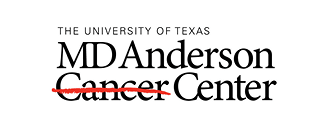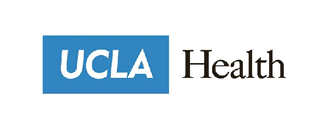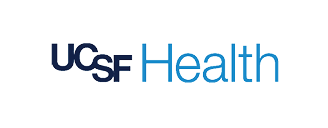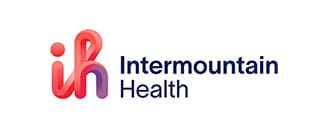Introduction
In the final part of our three-part series on strategic planning in specialty pharmacy, our panelists discuss the patient experience. This includes strategies to optimize patient satisfaction and outcomes.
Next, they discuss shipping as an extension of pharmacy services to improve medication access, as well as navigating contingency planning for unexpected weather events.
To start, Daniel illustrates the correlation between patient satisfaction and the value of a specialty pharmacy program.
Meet the panelists

Regina Schomberg, PharmD, BCPS
Atrium Health Wake Forest Baptist
Regina is the AVP of Retail and Specialty Pharmacy Services at Atrium Health Wake Forest Baptist. She brings over 30 years of experience in pharmacy practice, including acute care, retail, and specialty services.

Daniel Madrid, PharmD, MBA
Intermountain Health
Daniel is the Community Pharmacy Director at Intermountain Health, a VPL customer. Daniel has 11 years of pharmacist experience, including retail, health system outpatient, and specialty pharmacy.

Jonathan Ogurchak, PharmD, CSP
Zeal Specialty Pharmacy
Jonathan is the CEO and Co-Founder of Zeal Specialty Pharmacy, an independent pharmacy in Pittsburgh, Pennsylvania. Part pharmacist and part techie, Jonathan has continuously pushed the industry’s status quo over the last 15 years.
Daniel
By nature, specialty pharmacy is a high-touch service line. So, it’s an easy opportunity to exceed patient expectations.
Patient satisfaction data can be used to show your program value to manufacturers for limited distribution drugs, to payers for network expansion, and even to your C-suite for provisional resource allocation.
When I explain specialty pharmacy to someone who doesn’t know what it is, I usually tell them that these medications are considered special because they truly do require our teams to assist in procurement. Otherwise, the medications would be relatively unattainable for our patients.
To illustrate, patients wouldn’t be able to afford these medications without the work of our teams. Patients would also be more likely to suffer complications if medication efficacy, compliance, and adverse events weren’t addressed by our clinicians at regular intervals.
At our pharmacies, our patients sing the praises of our teams who are dedicated to benefit investigation and financial assistance. Communication with patients is key to satisfaction.
Imagine, for example, having a life-changing diagnosis and not receiving the medication on the day that you were told you would receive it, or not receiving a call from the pharmacy when the doctor promised that a medication would be there.
Specialty medications often come with a higher degree of concern from our patients. There’s a sense of urgency, potentially even a higher sense of risk, and we need to be empathetic to that.
Patient dissatisfaction resulting from delays due to a carrier or wholesaler issue can often be avoided with a simple courtesy call or, better yet, an automated text.
Keeping patient feedback visible to your team is also helpful in fostering the drive to promote a positive patient experience. Luckily, accreditation requires pharmacies to measure patient satisfaction.
With the data already available, you and your teams can set improvement goals to keep these metrics visible. Additionally, organizations like NASP offer a patient satisfaction survey hosted by a third party. This allows your organization to benchmark your results against another organization.
I will add that patient satisfaction is often heavily rooted in convenience and speed, for better or for worse. I think this is even more true for the future. For example, requests for digital refill assessments are increasingly common.
Organizations should plan for some of those system solutions that we discussed in Part II, as those can boost efficiency while maintaining the same level of quality and patient satisfaction.
Maintaining patient satisfaction when partnering with third parties
Another consideration when partnering with third-party vendors is ensuring the continuity of care and patient satisfaction. When contracting a partner who doesn’t necessarily work under your pharmacy, they essentially become an extension of your brand.
While these partnerships aim to improve efficiency and enhance the quality of care, it’s often inevitable that these partnerships can cause some difficulties. For example, a patient may call with a complaint about a shipping issue that’s outside of your pharmacy’s control.
In cases like these, there’s little you can do besides accept the error and apologize to the patient. In the worst-case scenario, this can be incredibly costly both in dollars and the invaluable cost of patient safety.
Jonathan
Delivery partners really are an extension of your brand. Whenever there’s a problem, and that package doesn’t arrive on the patient’s doorstep, they’re not thinking it’s a FedEx problem or a UPS problem, they’re thinking that it’s a pharmacy problem.
Where we’ve found the most success is by building strong partnerships with carriers to help mitigate some of this risk. Having those relationships allows you to communicate with patients proactively to minimize the damage of any problems that arise.
For example, a package may not arrive due to forces that are beyond our control. However, instead of letting the patient sit around and wait for a package that isn’t coming, we can leverage our partnerships to communicate these issues to our patients and also hold our carriers accountable.
We’re not always going to be perfect, especially when relying on third-party services to provide the full spectrum of care to our patients. The key is to find those solutions that you can count on to resolve problems more effectively.
Contingency planning for unexpected weather
When you’re shipping highly sensitive medications to your patients, there’s another critical variable to consider: the weather.
Below, our panelists share their experience navigating weather disruptions in their pharmacy practice, as well as how they plan for resilience when shipping to different states, during different seasons, etc.
Daniel
It was a huge winter storm that led to one of my first big headaches in specialty pharmacy. As I mentioned, I managed a pharmacy in Denver that primarily ships to Colorado and Montana.
I remember this exceptional storm was headed for the Western US, so we thought, “Okay. Let’s get everything shipped out before the storm hits tomorrow.”
However, FedEx’s hub for all of our shipments is located in Memphis, Tennessee. To our detriment, a different storm system was headed for Memphis. All of our shipments made it there before the Denver storm hit, but then sat there for a day or two with the FedEx planes unable to leave Tennessee due to weather.
There was such a backlog of deliveries out of Memphis that we had to replace a lot of products in both Colorado and Montana, and Montana wasn’t even experiencing the storm.
This was costly for us, and it was absolutely bad for patient care. The matter really helped us understand that we need to consider weather patterns beyond just our final destination.
Each year, we get better at navigating bad weather, and we now plan for weather issues by checking all three geographies daily. Depending on the time of year, we will also pack our coolers with whichever of the three geographies has the hottest or coldest temperatures. We also work with patients and providers to try and adjust shipments for potential weather disturbances.
Ultimately, patients need their medications despite bad weather. Right? We also plan for continuity by ensuring that we have multiple options for redundancy. We have local couriers and carriers available to us when we’re planning for inclement weather.
For example, we could have avoided a FedEx delay resulting from a storm by utilizing a local courier here in the Denver metro area, and that’s what we do now.
This type of redundancy can be an investment. Keep that in mind because your second and third options probably aren’t your cheapest, but this strategy does prioritize uninterrupted patient care and safety.
Regina
To add to Daniel’s thoughts, whether it’s the weather in your area or outside of your area, utilizing those regional couriers and pivoting quickly is a must.
Shipping in the southeast, we do get ice, but we don’t get as much snow. Really what we have to be resilient around is tropical storm and hurricane planning. We know the cone of a hurricane can change direction quickly. In these scenarios, we have to think about getting medications to patients before they evacuate their area.
A good example from just recently is tropical storm Debby, which was hard to predict. We didn’t know exactly where it was going to arrive. It could have been anywhere in the areas that we were shipping to. In order to get ahead of this, we pivoted to RPCs to get patients the medications they needed despite these hard-to-predict weather events.
Jonathan
It’s funny that both Regina and Daniel mentioned Memphis, Tennessee. Being from Denver or Pittsburgh, you’re used to a little bit of snow on the ground. But it’s crippling to most of our major carriers whenever there’s just a little bit of a dusting in Memphis. We saw a lot of that firsthand.
We leverage technology to look at weather forecasts and predict delays. In these cases, we change our cold chain packouts and bump up the estimated shipping time by a few days. Even if it does sit on a tarmac for a little bit longer due to a transit issue, we can reroute the package back to our pharmacy.
This way, the drug doesn’t have any risk of spoilage, and we can make sure that we send out a secondary shipment to the patient. Early in my career, we were shipping a lot of medications without qualified packouts. It’s amazing to see how the industry has adapted over time.
I remember a day when it was my job to write off a $20,000 or $30,000 shipment just because a patient would call with a question about a package sitting in the sun or in the cold for too long. We want to make sure the patient is safe, so the key is finding those nuances, planning contingencies for the weather, and optimizing infrastructure to be resilient in the face of those challenges.
Patient outcomes and medication adherence
While continually working to improve last-mile logistics and get medications to patients’ doorsteps safely, there then comes the challenge of medication adherence.
In the specialty pharmacy industry, the nature of patients’ diagnoses can be complex and sometimes devastating.
Certain social determinants of health can contribute to these conditions as well. In other words, the circumstances beyond just the clinical care that the patient receives which often end up being responsible for a majority of their health outcomes.
These factors significantly influence medication adherence and patient outcomes. However, they are often beyond the control of the pharmacy. Regina shares some insight on this challenge below.
Regina
Many healthcare professionals feel responsible for controlling all the elements that can negatively influence adherence. However, we have to look at the areas that we really can control.
Just because a patient has their medication in hand, doesn’t mean that they’re going to be adherent to their treatment. You can even give them their medication for free, but that doesn’t mean that they’re going to take it.
I think it’s a process of promoting patient education and understanding, as well as cross-team collaboration, which aligns already with the specialty pharmacy practice. This also includes decreasing the fragmentation of care by keeping patients within the health system when possible. This way, providers and pharmacists can work collaboratively to best care for our patients.
And lastly, while digital interaction is wonderful, sometimes folks just need an empathetic person to listen to them and understand them. Yesterday, I heard a teammate tell a patient, “I’m honored to be working with you and helping you through this uncomfortable portion of life.” That’s really what helps us create a foundation of trust with our patients which ultimately drives adherence and better outcomes.
Conclusion
Patient experience is the core of specialty pharmacy. Planning for the best patient experience possible is essential to driving patient satisfaction and positive outcomes. Both factors tie into your pharmacy’s value, your ability to scale, and obtaining accreditation.
Focusing on patient education, reducing care fragmentation, and leveraging data to track satisfaction will help specialty pharmacies exceed patient expectations, promoting long-term success and improved health outcomes.
Strategic partnerships with third-party vendors and careful contingency planning for weather disruptions can ensure continuity of care even in unpredictable circumstances, further supporting the patient experience.
This article is the final part of our three-part series on strategic planning in specialty pharmacy. Click here to read the first article on infrastructure, hiring, and accreditation. Click here to read the second article on scaling the specialty pharmacy business.
About VPL Rx
VPL Rx is a clinically minded shipping, tracking, and compliance solution designed to modernize pharmacy distribution and promote healthier patients. Our quicker shipping workflow delivers prescriptions safely with real-time tracking, delivery alerts, and last-mile intervention. Exportable performance reporting and data analytics help pharmacies optimize costs and maintain compliance and accreditation.


































